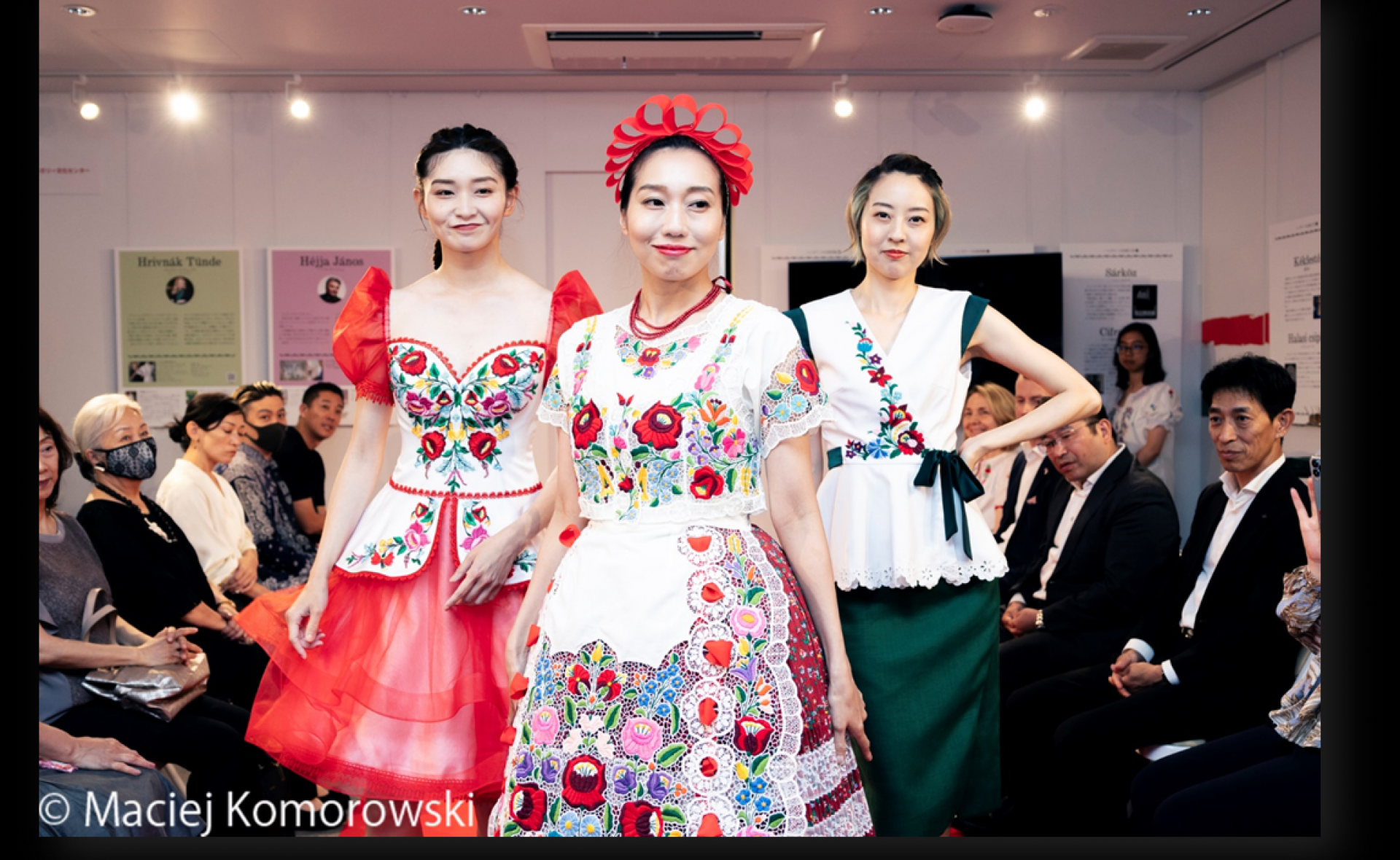
The latest exhibition of the Liszt Institute Tokyo was opened in front of a professional audience of nearly sixty people. The exhibition, entitled Folk Costume Reimagined, presents the works of contemporary Hungarian fashion designers who use Hungarian folk art motifs in the design of modern clothes. Seventeen dresses by nine contemporary fashion designers have been brought to the island nation to provide new inspiration for the Japanese market.
The nine designers - János Héjja, Tünde Hrivnák (BY ME), Krisztina Katrics (Örökség Alkotóműhely Sooo Hungarian), Gitka Kriston (Kriston Gitka Handmade), Georgina Rengei (Rozmaring Hungarian Design), Springer Orsolya (Handicraft Academy), Szabó Eszter (tündEszter), Szombati Klára, Váczi Rozália (Matyódesign) - were presented by renowned Japanese fashion designers, professional partners and celebrities. According to Anita Nagy, Director of the Liszt Institute Tokyo until July 31, 2023, "the exhibition will give more popularity to Hungarian traditional embroideries and folk art motifs and thus attract more designers and artists who will be eager to use the Hungarian pattern world in their future clothes and artworks."
During the half-hour fashion show, embroideries from Kalocsa, Matyó, Sárközi, furthermore Bihar filter making, lace from Halas, blue dyeing and Hungarian sagas were also presented. After a brief introduction to the Hungarian folk costume motifs and the designers' concept, Japanese models dressed in Kalocsa and Matyó folk costumes took the stage to present collections combining contemporary and traditional elements.
The exhibition is open until 10 November 2023 at Azabu Juban in downtown Tokyo, at the Liszt Institute Tokyo. In September and October, the exhibition will be accompanied by a series of other events, including a matsu embroidery workshop, a Hungarian dance workshop and a folk song choir, and in the autumn, the Hungarian Cultural Institute plans to develop school projects using Hungarian folk art motifs with teachers from the famous Bunka Gakuen Fashion School in Tokyo. The exhibition is supported by the Ministry of Culture and Innovation.
